These are truly cyclical and odd times. There’s the topsy-turvy political dramas that remind of the Nixon era, there’s this fluidity of economic and changing environmental concerns, and then there’s my return (once again) to items like Dungeons and Dragons, played in youth into the wee hours of the night. I have been playing this RPG since summers spent at Camp Ransburg in southern Indiana in the late 1970s. Rather than pursuing real life merit badges, we were much more invested in creating fantasy worlds filled with beholders, goblins, mimics, ogres, orcs, and wraiths. Now 50+, I’ve returned once again to familiar gatherings with persons unknown at a table with dice, miniatures, fantastical characters, and peculiar conversation, in hopes of reaping the rewards of an epic adventure.
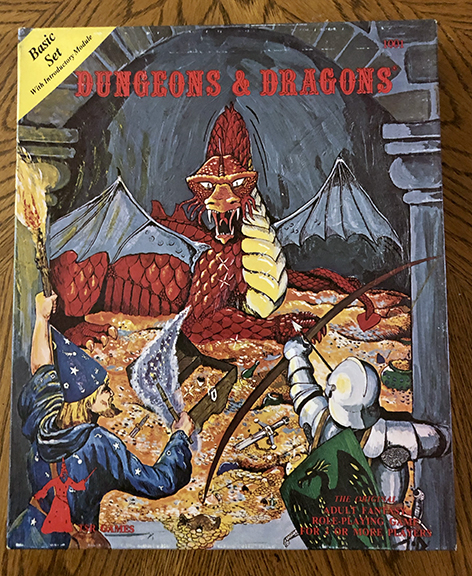
TSR Inc., Lake Geneva, Wisconsin, 1977.
Having played each of the editions (1st through 5th) over the past 30 years. I find it remarkable that the game appears to have (once again) hit the mainstream with positive response. There are numerous Youtube channels devoted to the hobby. One can watch live role-playing by well known actors (Vin Diesel, Stephen Colbert), catchup on tips on how to properly paint miniatures, listen to streams about the history of TSR games, Gary Gygax, and others who created weird worlds in dank minimally lit and marginally heated basements. It’s amusing to consider the evolution of D&D. In early days, D&D was treated in a similar way to many comics of the 1950s. In the 1980s, there was similar demonizing and scapegoating on par with that found in Frederic Wertham’s Seduction of the Innocent (1954) directed at horror titles published by EC Comics. At inception, the majority who indulged in D&D were either zit covered teens (primarily boys) or dudes who spent more of their life in the lands of Greyhawk, Dragonlance or the Forgotten Realms rather than in reality. That has evidently changed today. One of the main draws appears to reside in the games ability to connect similarly minded spirits.
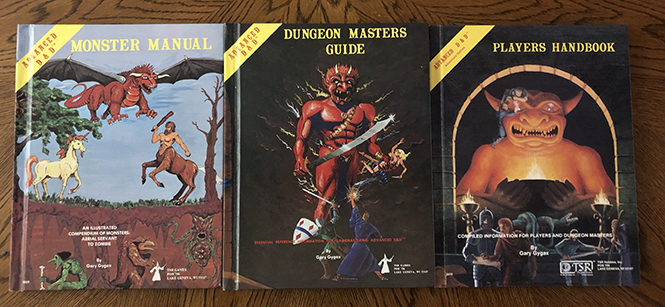
and Players Handbook, TSR Inc., Lake Geneva, Wisconsin, 1977.
There’s something healthy in meeting new people with varied backgrounds. I do not play with the same group week in, week out. My schedule is far too busy to make such commitment. So, I drag myself up to the Dice Dojo in Edgewater or locate a campaign in need of another body via Meetup.com. There’s that awkward “feeling out” period that is quickly overcame due to the nature of RPGs. This is an activity where communicating and companionship are key. No one really wins or looses. It’s about creating a journey and building a community. Plus, there’s generally someone interested in helping you through those difficult adventures or has a more in-depth understanding of the game mechanics. These aspects are those things that bring me back in regular intervals.
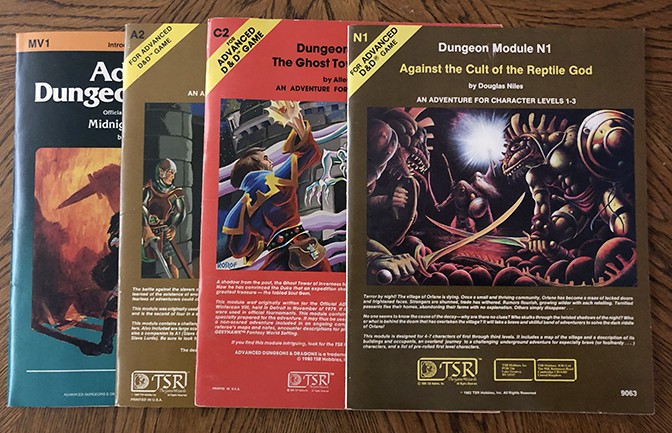
One item that stands out in the 5th edition is the expansion and refinement of the character classes. Now, one can select from 12 different classes (Barbarian, Bard, Cleric, Druid, Fighter, Monk, Paladin, Ranger, Rogue, Sorcerer, Warlock, and Wizard). There is also the ability to combine the classes to adapt to the different types of adventures and campaigns. This adaptability appears to be more aligned with developing a character in similar to the way one changes over the course of a lifetime. I tend to be most drawn to aspects found in the bard and monk. In my youth I wanted to steamroll my way through dungeons in search of battles. Today, I prefer a more measured thoughtful approach where I can use stealth or clever dialogue to circumvent unnecessary encounters. There’s something in testing one’s wits in rather precarious circumstance that can offer insight into how to deal with difficult situations.
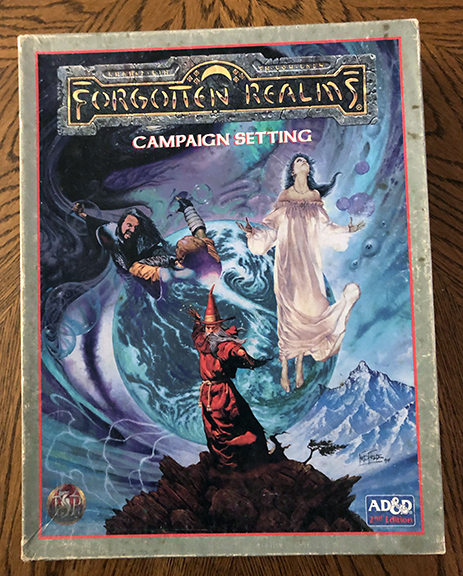
Lake Geneva, Wisconsin, 1993.
In looking at the past I am finding a bit of reward these days. Over the past month I pulled a number of older editions of the Monster Manual, Player’s Handbook, Dungeon Masters Guide, and Campaign Books from dusty bookshelves and perused their pages. These D&D books bring back many memories, most put a smile on my face. Those times spent until dawn camping and playing along lakesides in southern Indiana were a perfect setting for touring unknown lands in search adventure and treasures beyond imagination. But, mostly these books remind of those nascent days where I learned some valuable traits I still hold dear. As I write this there’s something rather peculiar in my ability to still rattle off what a Boy Scout is: trustworthy, loyal, helpful, friendly, courteous, kind, obedient, cheerful, thrifty, brave, clean, and reverent. These qualities I hope to retain for the 2nd half of this life’s adventure.
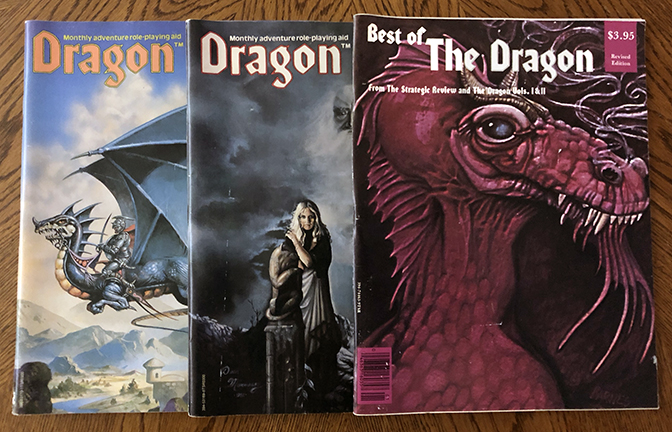
continued in print until 2007, and in digital format unit 2013.
Additional Dungeons & Dragons images:
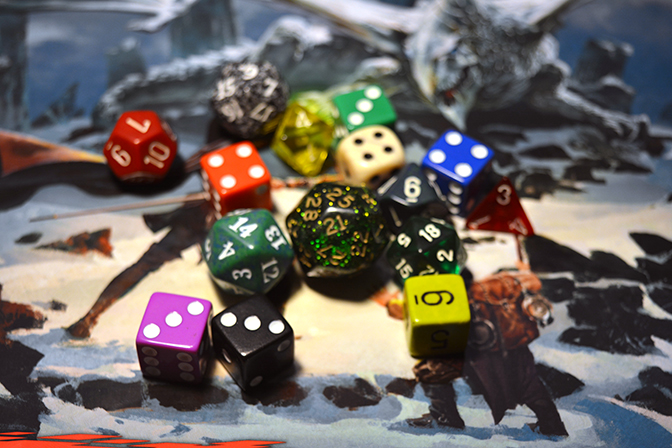
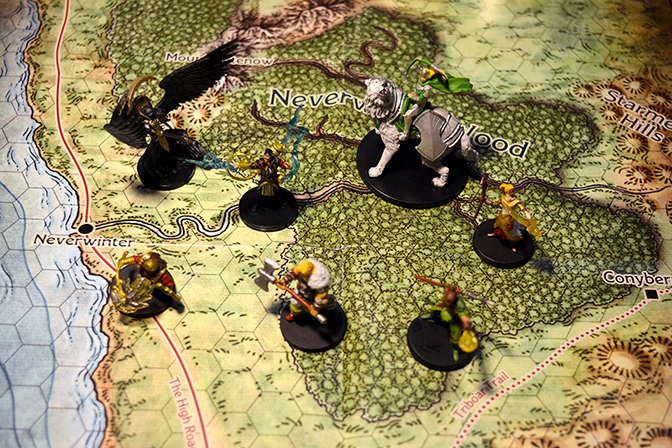
and enhance RPG gameplay.
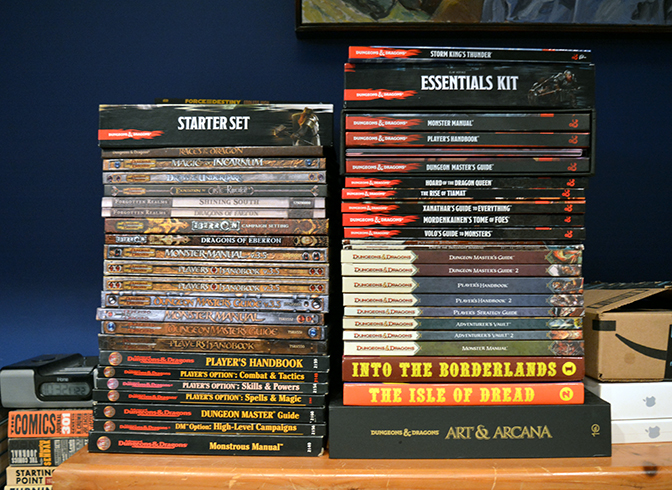
from personal collection, Chicago, Illinois, 2019.
Some additional links for more information on Dungeons & Dragons and related topics:
Wizards of the Coast – https://company.wizards.com
D&D Beyond – https://www.dndbeyond.com/posts/666-eye-of-the-beholder-d-d-beyond-heroes-episode-1
Sly Flourish – https://slyflourish.com/flow_of_trap_detection.html
Geek & Sundry – https://geekandsundry.com
Nerdolopedia – https://www.nerdolopedia.com
Roll20 – https://roll20.net
Dungeons & Dragons Online – https://ddo.com/en
Writing and photography by Chester Alamo-Costello


